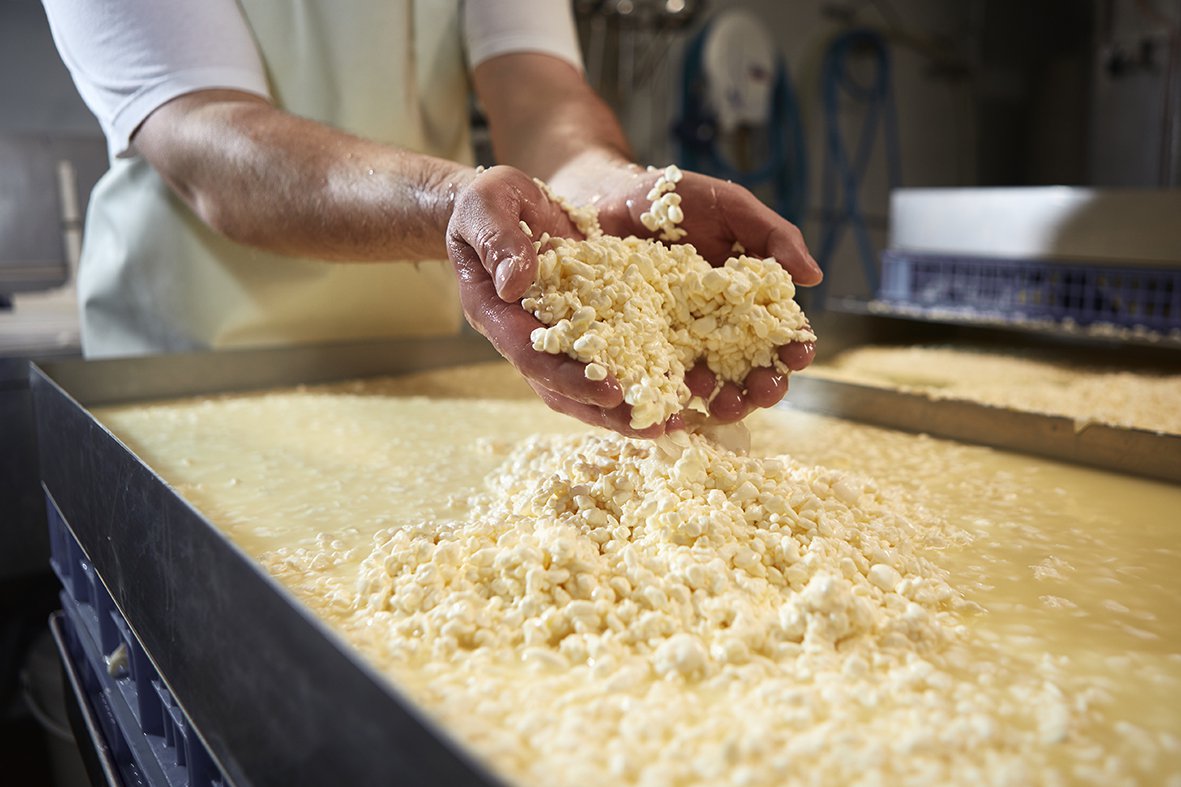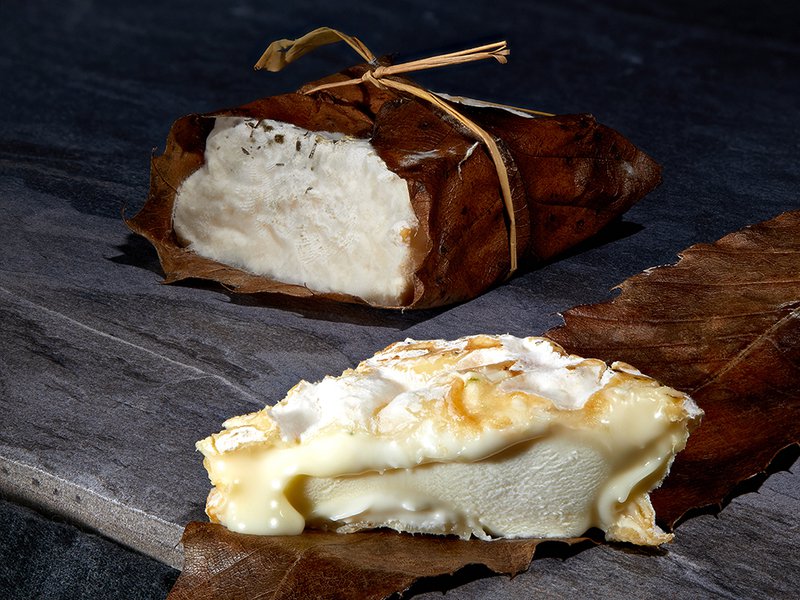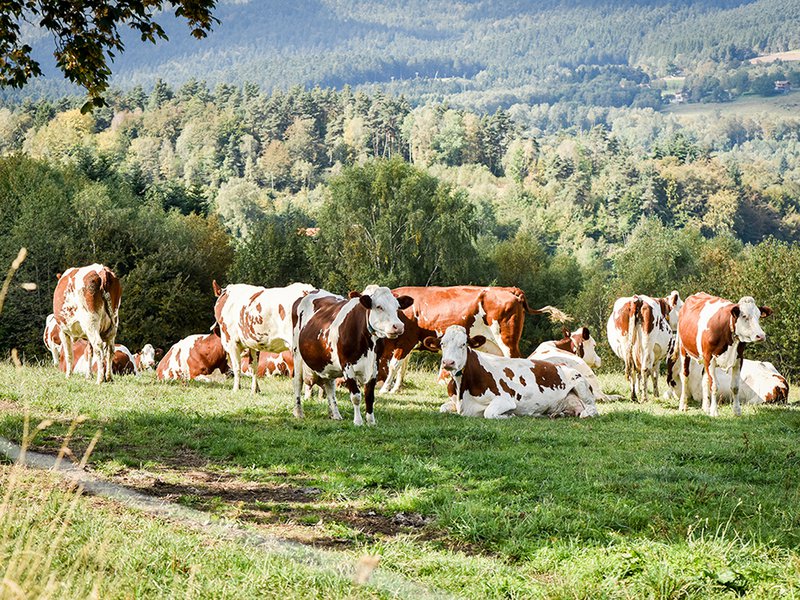The Auvergne region in central France is renowned for its rich culinary heritage, particularly its cheeses. This mountainous region, characterised by volcanic landscapes and lush pastures, offers an ideal environment for dairy farming and cheese production. The distinct terroir, combined with traditional cheese-making techniques passed down through generations, has established Auvergne as a key player in the world of cheese.
I recently spent a week there, travelling through bucolic scenes to post-card perfect villages, that often felt as if they were in the middle of nowhere. I was fortunate enough to have exclusive access to several incredible experiences – and of course, taste a lot of cheese. What follows, mes amis, is a selection of my favourite fromages and highlights from the tour.
Saint-Nectaire
One of the most famous cheeses from Auvergne, this semi-soft, creamy variety is made from raw or pasteurised cow’s milk. It is named after the village of Saint-Nectaire and has been produced since at least the 17th century. Today, there are 200 producers.
Alain Guittard is one of these masters – twice a day, he’s quietly handcrafting batches of cheese from the milk of 60 cows that graze on volcanic pastures. Watching him working with the curds and whey, shaping the cheese, salting and then pressing it, is meditative.
All wheels are aged for up to eight weeks on rye straw mats in humid cellars – this contributes to the cheese’s distinct rich, nutty flavour with earthy undertones. It’s versatile – working well on a cheese platter, melted into a fondue, cubed into a salad, or adding depth to pasta.
Nothing quite beats having it for breakfast, on the farm on which it’s made, overlooking undulating hills and verdant valleys.
Cantal
There are a lot of inimitable characters in the French cheese industry, who genuinely blend tradition with innovation. On a previous visit to the Jura, I met Jean-Charles Arnaud who ages 180,000 wheels of Comté in a sprawling fort, originally commissioned by Napoleon. On this trip, it’s fourth generation cheesemaker Cyprian Duroux and his family’s cheese “cellar” that stood out.
The Duroux family of Fromagerie Duroux, has a rich history of cheese-making in Auvergne. They’re renowned for a unique aging process using an old 1.3km train tunnel, which, with its constant humidity and temperature, provides ideal conditions for maturing the likes of Cantal cheese.
This is one of France’s oldest cheeses, with origins dating back over 2,000 years. Made from cow’s milk, it’s firm and dense with a crumbly texture that comes in three varieties: jeune (young), entre-deux (matured) and vieux (aged). The latter is the best. I loved its robust, earthy taste with hints of spice and caramel.
Rocamadour
It’s not often I order a burger – especially en France. But, after a day of discovering this soft goat cheese made from raw Alpine goat’s milk, and falling in love with it, having a puck-sized round of it atop a delicious patty, all drizzled in Figeac honey, simply had to be done.
It’s at La Borie d’Imbert, a farm renowned for producing Rocamadour, that I first came across this AOC (Appellation d’Origine Contrôlée) cheese. They emphasise quality and authenticity, using local, sustainable practices. But, beyond cheese-making, the company supports people of determination by providing employment opportunities, fostering inclusivity, and promoting social responsibility within their community.
Unlike many cow’s milk cheeses, Rocamadour is only aged for approximately six days – this is what ensures its mild tang that has hints of hazelnuts. I couldn’t get enough of this cheese – and it seems neither can locals; it’s reported that 31 million pieces of this cheese are produced per year.
Laguiole and Tomme fraîche de l’Aubrac
The town of Laguiole on the Aubrac plateau, bordering Auvergne, is famous for three things: knives, chef Michel Bras’ three-Michelin star restaurant and its eponymous cheese. Pronounced ‘Lah-yole,’ this cheese, which is only produced from whole, raw milk from the herds of French Aubrac or Simmental cows, has a long history, dating back to the Middle Ages.
Much like the cylindrical shape of Cantal, it is produced in large wheels and left to ripen in cold, humid cellars. I witnessed its full production at Jeune Montagne – a cooperative comprising 77 dairy farmers. Halfway through the process (after the curd has been drained in linen cloths, and before it’s broken up, salted, shaped and pressed), it forms a fresh product called tomme fraîche de l’Aubrac. This is the key ingredient in a regional dish called aligot. A mashup of melty cheese, potato purée and cream.
During a hands-on class at Jeune Montagne’s HQ, I learned that the key to getting a smooth, airy texture is to rice the potatoes while they’re still hot, then incorporate the cream and grate in the tomme over a low heat. Whipping the mixture with speed and conviction is what is required to build up the stringiness of that melting cheese, ensuring the ultimate long, sheer and elastic cheese pull.
Bleu des Causses
The end of my French cheese journey takes me deep into ancient mountainside caves in Peyrelade. Built like cathedrals, out of limestone rocks, it’s in these cool chambers that rounds of Bleu des Causses are taken to age.
Originally, these cellars were used for ripening Roquefort – the famous sheep’s milk cousin of the lesser-known Bleu. The environs provide cool and humid conditions that are ideal for developing both cheeses’ depth of flavour and characteristic blue veins.
This natural maturation method, steeped in tradition, ensures a unique terroir expression, resulting in a complex and earthy profile of the cheese that also embodies the region’s culinary heritage. Despite the strength of the Bleu with its noticeable tang, it remains smooth and creamy. It’s an unexpected discovery and a delicious one at that.











